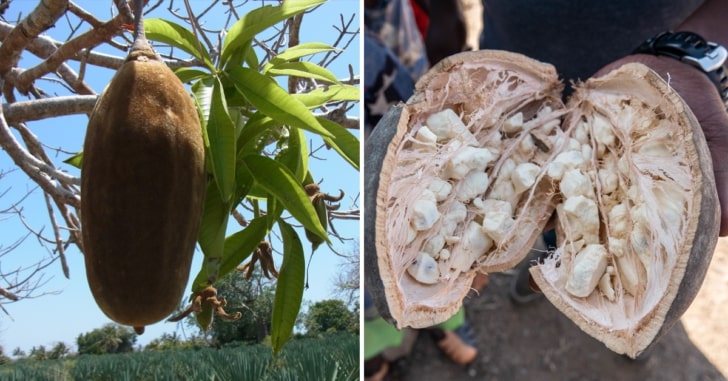Recipes
7 Facts About The Strange But Nutrient-rich Baobab Fruit
Some fruits are mysterious.
Not because they look and taste different, as Jacote did, but because they grow on trees that are by no means inferior to skyscrapers.
And unlike other fruits, their pulp becomes drier as they ripen.
One such mysterious fruit is the baobab, which is famous for its dry white flesh.
Want to get an idea of this peculiar fruit?
Let us reveal seven facts about the baobab fruit that you may not have known before.
Table of Contents
1. Baobab Has Powder Instead of Pulp When Fully Riped
Baobab fruit differs from other fruits in that it does not contain pulp when fully ripe.
What is Baobab Fruit?
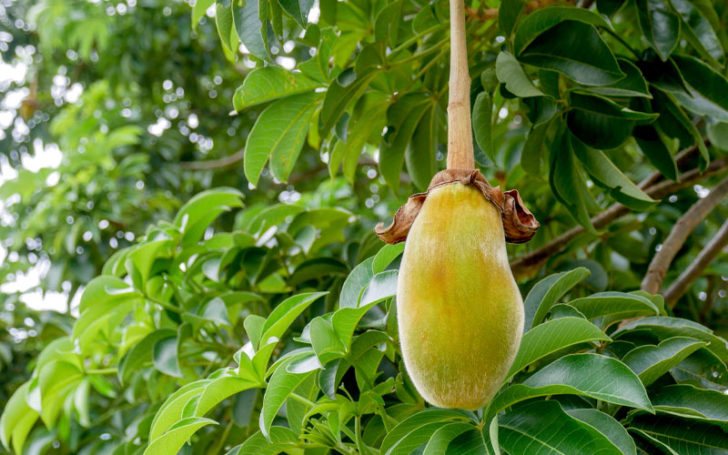
Baobab Fruit is an edible fruit that hangs from the long thick stems of trees of the genus Adansonia, green when immature, and turns brown when fully ripe.
The flavor is slightly sharp and citrusy.
A fully ripe baobab fruit has a light brown rind with white powdery cubes entwined with red fibers.
The cubes are crushed and ground to obtain a fine powder.
In places like Australia it’s called dead mouse vine. It is also called monkey bread or sour fruit cream in some countries.
The seeds inside are as small as one. Their shells are hard and must be pounded to get the core in.
What Does Baobab Fruit Taste Like?
The fruit of the baobab tree tastes a bit like yogurt and a bit sour like a lemon. A few people also say it tastes like tamarind.
According to some, baobab seeds taste like Brazil nuts.
Baobab Powder
The African Baobab fruit is opened to extract the dry white pulp entangled in the red fibers and then ground to make a powder.
This white powder is then used as a natural preservative in addition to many other uses.
Baobab Extract
Baobab extracts are made from the leaves and white pulp of the baobab fruit and then added to beauty products. Like, Organic Baobab oil is considered ideal for cosmetic products due to its antioxidant content and high Omega 6-9 fatty acids.
2. Baobab Trees are Nothing Less Than Skyscrapers
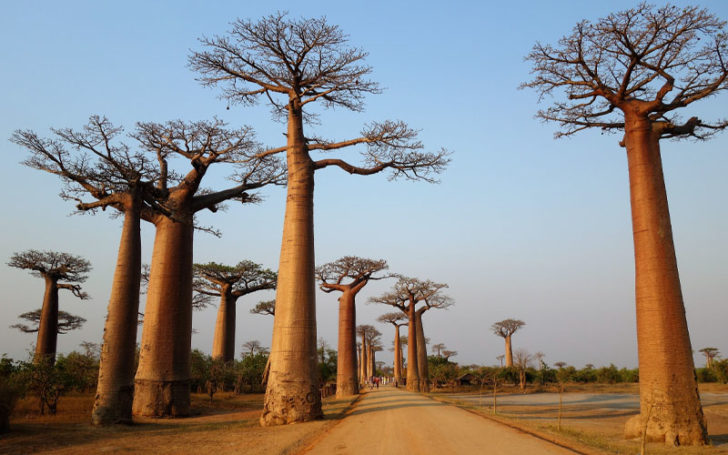
Baobab trees are peculiar trees found in East African countries and Australia.
There are eight different species, of which Adansonia grandidieri is the tallest.
Baobab trees are known as the thickest, tallest and oldest trees, with several of them 28 feet high.
These trees are also called upside down trees because of their root-like branches spread evenly on a straight trunk.
If you go to the deserts of Madagascar, at first glance the many baobab trees will give you the illusion of a painting because of their sheer beauty and similar size.
Some baobab trees have flowers that grow once a year and bloom at night.
These white flowers have a radius of 2.5 inches, taller than myrtle, but with closely interconnected filaments with orange tips.
Baobab tree flowers hang upside down like a lamp whose petals look like shadows and whose fibers look like a light bulb.
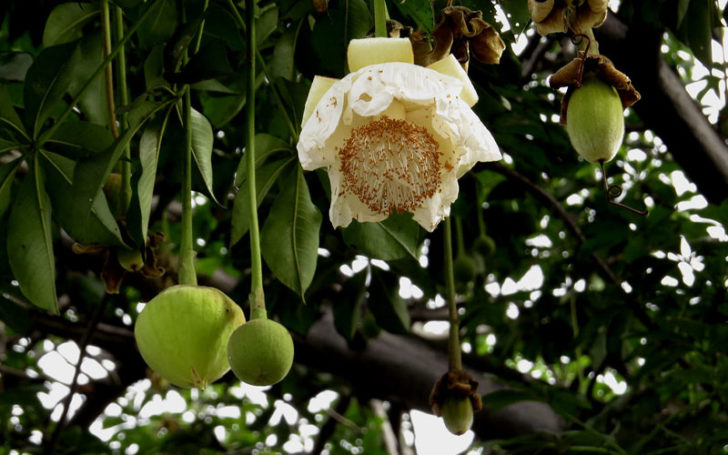
Interestingly, its flowers bloom at night.
Another interesting fact about baobab trees is their longevity.
Carbon dating of several trees in Madagascar even showed the trees to be more than 1600 years old.
Another interesting fact is the mammoth trunk these trees have, which is sometimes hollow from the bottom.
The use of these spaces for shops, prisons, home, bus stops is quite common in these countries.
An ancient hollow baobab tree in Zimbabwe is so large it can hold 40 people inside.
A baobab tree can store up to 30,000 gallons of water to survive the drought and harsh water conditions in their home country’s deserts.
It is normal for locals to peel their skins to sell, which is then used to make liquor or fire charcoal.
Did you know: In the East African country of Malawi, there is a hollow baobab tree called the Leprosy Tree that was once used as a burial ground for people who died of leprosy.
3. Baobab Fruit is the produce of Africa, Madagascar, and Australia
Native to Madagascar, Africa, and Australia, Baobab trees grow in a tropical and subtropical climate with minimum freezing temperatures.
Of the eight different species found in these three regions, one is abundant on the African mainland, six in Madagascar, and one in Australia.
But due to Global Warming and local people’s need for fuel, these giant trees are dying faster.
Baobab Trees on the verge of collapse
Some of the oldest baobab trees in Africa have died suddenly in the last decade due to climate change.
The death of these giant trees raises another question.
If burning or removing their shells doesn’t kill them, why do they die?
Well, the researchers concluded that they rotted from the inside and suddenly collapsed before they died.
4. Baobab Fruit is Highly Nutritious
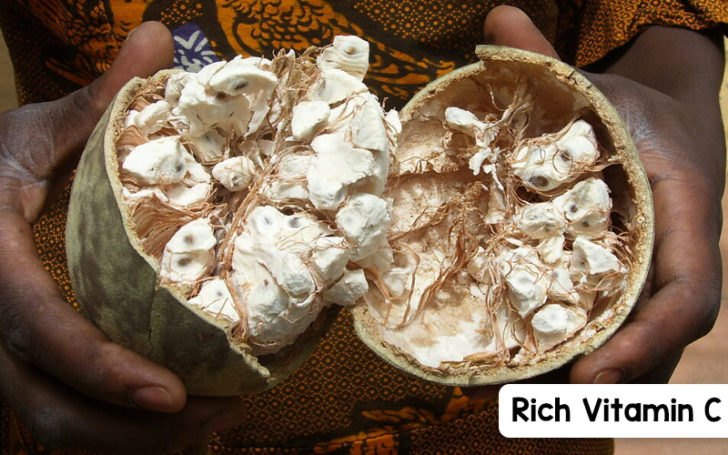
Baobab fruit is packed with nutrients.
The white powdery stuff may look odd, but the nutrients it contains can top off other fruits.
Most importantly, it is rich in vitamin C, an immune-boosting vitamin with 10 times more than that found in oranges.
Plus, it’s high in antioxidants.
It also contains 30 times more fiber than lettuce and 5 times more Magnesium than avocado’;
6 times more potassium than bananas and 2 times more calcium than cow’s milk.
Let us see the baobab nutrition facts in tabular form below.
| Serving size= 1 tablespoon (4.4 g) Baobab powder | |
| Nutritional Factor | Value |
| Calories | 10 |
| Carbohydrates | 3g |
| Fiber | 2g |
| Vitamin C | 136mg |
| Thiamin | 0.35mg |
| Vitamin B6 | 0.227mg |
| Calcium | 10mg |
5. Baobab Fruit Has Amazing Health Benefits
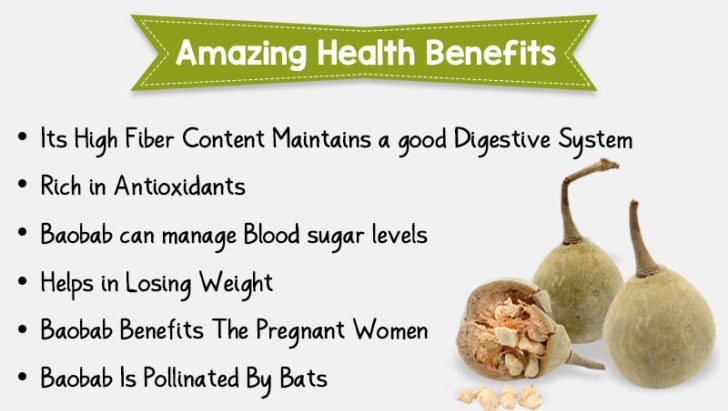
A very useful powder is made for the dry pulp of the baobab fruit.
Let’s look at a few of the benefits of baobab powder.
i. Its High Fiber Content Maintains a good Digestive System
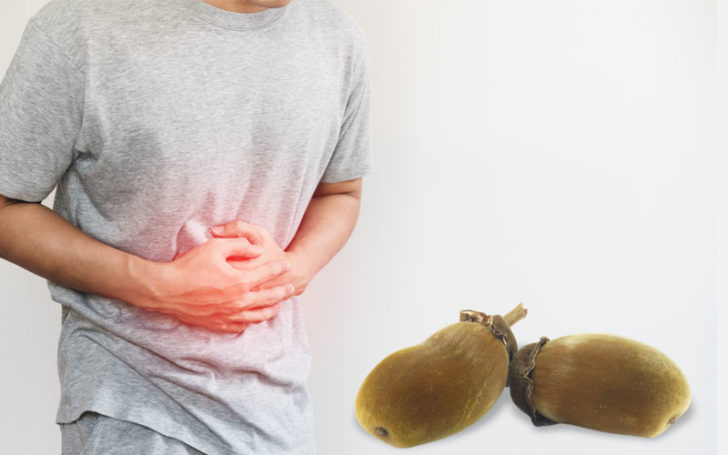
As discussed above, baobab fruit powder is rich in fiber, which helps the digestive system to function properly.
Fiber helps our body pass stool smoothly to prevent constipation.
In addition, fiber plays a vital role in preventing intestinal ulcers, piles and other inflammatory diseases of the digestive tract.
ii. Rich in Antioxidants
Dry and dehydrated, but baobab fruit is rich in polyphenols and antioxidants, just like delicious cherry juice.
Antioxidants protect your body against free radicals that can otherwise cause cancer and some heart diseases.
On the other hand, polyphenols improve digestion, blood sugar levels, blood clots and brain function.
iii. Baobab can manage Blood sugar levels
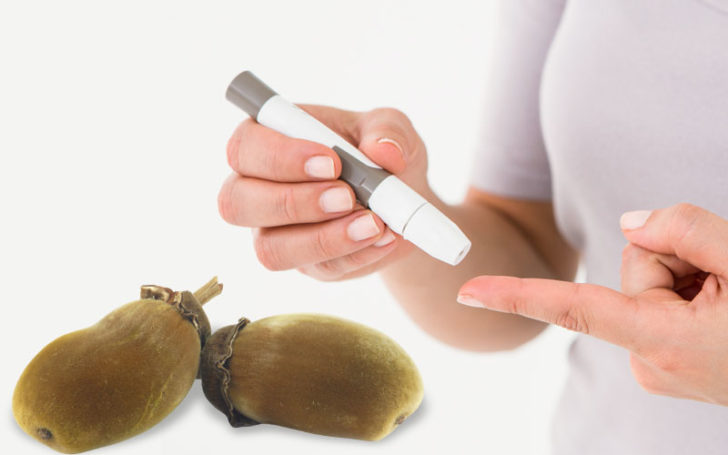
From Oxford Brookes University, Dr. Shelly Coe has this to say about baobab powder and diabetes:
“Baobab is rich in fiber, which can slow the rise in blood sugar and help prevent sugar spikes.”
Babobo maintains a good blood sugar level due to the presence of fiber and polyphenols in it.
In fact, the fiber content in the blood slows down the absorption of sugar in the blood, which in turn stabilizes the blood sugar level.
iii. Helps in Losing Weight

The presence of fiber in baobab fruit is the main factor in weight reduction.
Fiber is said to significantly delay gastric emptying, thereby prolonging the time before a person feels hungry.
According to another study, getting more fiber allows us to eat fewer carbohydrates, and as a result, our weight decreases.
iv. Baobab Benefits The Pregnant Women
The obvious baobab benefit for women is that pregnant women can meet their vitamin C requirements from this single source.
Vitamin C is a water-soluble lactone that strengthens the immune system of pregnant women, reduces the risk of anemia, and also plays a vital role in the development of the baby.
6. Baobab Is Pollinated By Bats
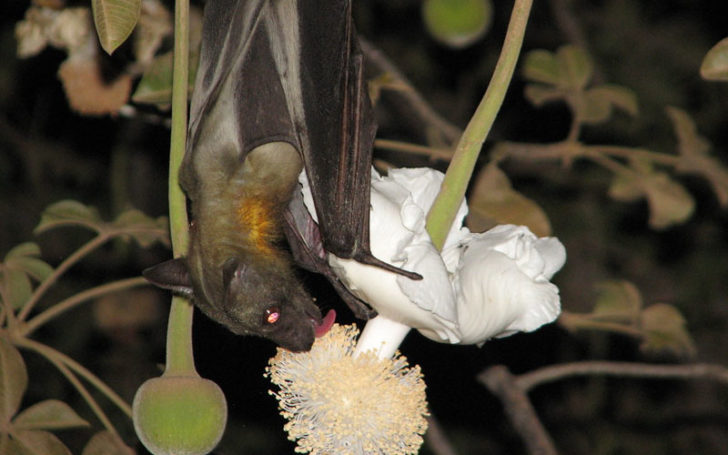
Instead of bees or flies, fruit bat species play a role in pollination of baobab trees.
There are multiple reasons for this.
First, the size of the flower allows bats to stay and pollinate it.
Second, the flowers grow on long stems at the ends of branches, making them easy for bats to reach.
This is because of the size of the flowers, which provides ample room for bats to stay and pollinate.
The time it took for these trees to mature was a discouraging factor for most farmers who wanted to cultivate it, as it took about 15-20 years to bear fruit.
But thanks to the latest vaccination methods, which reduced this period to 5 years.
7. Baobab Is Used In Multiple Ways
- Its leaves contain a large amount of iron, they are boiled and eaten like spinach.
- The seeds are roasted and used as a coffee substitute in these countries.
- You can mix it with your drink as the powder version is available worldwide.
- Add baobab powder to oatmeal or yogurt to reap its antioxidant benefits.
- The oil from its seeds is used in cooking or in cosmetics.
The question arises of how much baobab powder we should consume per day.
It is recommended to take 2-4 teaspoons (4-16 g) of Baobab powder daily for best results.
You can add it to your daily meal or mix it into any of your favorite drinks before drinking.
8. Baobab Powder Side-Effects
Taking too much of baobab fruit powder will provide excessive amounts of vitamin C.
Intake of more than 1000 mg of vitamin C per day can cause stomach pain, gas, diarrhea.
Because vitamin C cannot be stored by your body and must be taken daily.
How To Grow a Baobab Tree From a Seed
Growing baobab trees is a bit of a challenge.
Why? Because the germination rate of these seeds is very low.
In summary, it is useless to grow like other seeds.
Here’s how to grow a baobab tree at home.
Step 1: Preparation of Seeds
Scrape off the hard shell of the seeds and soak them in water for 1-2 days.
Soak the seeds on a damp towel or kitchen cloth for a few days, preferably in a container.
Step 2: Preparing the Soil
Mix coarse river sand with normal soil or cactus and place in a pot at least 10 cm deep.
Garden Tips: Always use gardening gloves before mixing the soil to protect the skin against allergens.
Step 3: Sowing the Seeds
Mix the seeds into the soil and cover with a 2 cm thick layer of coarse river sand and finally water.
Growing Conditions for Baobab Plant
Guilty
It needs regular water, but not too often. Watering two or three times a week is sufficient.
Light
They need bright sunlight. So you can place it on the terrace, balcony or garden.
Temperature
Because it is native to the African deserts, the temperature around it should be as high as over 65°F.
The Bottom Line
Growing on the strongest trees and drying from the inside, baobab fruits are rich in nutrients not found in any other fruit.
Not only the pulp, but also the tiny seeds are edible.
The benefits of baobab powder to your diet can help you prevent heart disease, improve the digestive system, lose weight and maintain blood sugar levels.
Have you ever eaten baobab fruit? How did it taste then? Let us know in the comments section below.

